September 6 to November 3, 2024
Land as Materiality, A Space for Spirits introduces the work of three Indigenous artists
working with materiality and form. Each artists intentional use of materials are rooted
in their own cultural heritage and personal experiences, employing both natural and
synthetic materials to explore themes of historical suppression, bodily autonomy,
and communal ties. Ash, wax, metal, porcupine quills, paper, animal hide, and plants
are central to their narratives. As their works visit new understandings and connections
are fostered.
July 26 to August 25, 2024
Many Latin American communities celebrate a girl’s fifteenth birthday with a party
called a quinceañera. Traditionally, a girl’s father joins her on the dance floor
for a special waltz, just the two of them. One family portrayed in this show transformed
this tradition when the mother invited all her friends to dance with their daughters.
Their faces gleamed with tenderness and pride. All of a sudden, each mother-daughter
pair whirled and began exchanging their daughters, spinning through the space as they
danced in new constellations, always shining with the same joy.
As the artist became a mother in a new country herself, she got to know mothers in the area, who are not only pillars of their nuclear families, but also of their communities. Building on deep friendships, these mothers created a strong support network that continues to expand and strengthen in the form of the non-profit Latinas 413, which highlights Latinas’ growing role in the Berkshires’ landscape.
The exhibition is guest curated by Carolina Porras-Monroy
In 2023, the Studios at MASS MoCA and The Berkshire Immigrant Center started the Iris Residency to support artists in Western or Central Massachusetts who are born outside the U.S., or identify as first or second generation American. The exhibition, MIGRITUDE (a word coined by Shailja Patel) showcases the work of the five selected Iris Residency fellows - Cima Khademi, Clemente Sajquiy, Marina Dominguez, Hanna Sobolieva, and Shailja Patel - and their different approaches to the continuous process of building connections to both, the old and the new place.
The exhibition MIGRITUDE is curated by the Iris Fellowship coordinators, Carolina Porras-Monroy and Luiza Folegatti.
*To learn more about the Iris Residency: assetsforartists.org/iris-residency
**MIGRITUDE (Kaya Press, 2010) is the bestselling book, based on the internationally touring one-woman show, of poet, activist and exhibiting artist Shailja Patel. The word MIGRITUDE captures the concepts of migrant attitudes and migrants with attitude. It represents a reclaiming of voice and power by migrants who speak for themselves.
February 2 - March 29, 2024
Unfortunately, It Was Paradise examines the entangled histories of ecology and migration. The three artists address how ecology surfaces in our memory, imagination, and present that are shaped by the legacies of slavery, war, and settler colonialism. Geographer Kathryn Yusoff writes, “Imperialism and ongoing (settler) colonialisms have been ending worlds for as long as they have been in existence.” While mainstream environmentalism attempts to “protect” land by displacing Indigenous communities or building border walls to restrict mobility and control the population, the works in this exhibition reframe ecology as a site of intersectionality, tending particularly to those in the diaspora who cultivate new forms of life within and beyond the boundaries of the nation-state.
October 6 - November 17, 2023 at Gallery 51
Reflecting Ecologies: Artists in Nature explores the intersections of contemporary artists, nature, and ecological thinking. Ecology is the study of the relationships among organisms and their surroundings and each other, often describing how we affect and are affected by the natural world. The artists in this exhibit suggest connections with ecologies via personal narratives of private moments in nature, to philosophical or artistic concerns about their media and approaches to imagery. The artists and artworks in this show often overlap with science-oriented imagery or methods, and with that comes careful observations of the human condition in nature. Ashley Eliza Williams’ colorful paintings develop concepts of the possibility and impossibility of communicating with organisms found in nature. Malaika Ross’s abstract drawings of soil microbes encourage us to examine the microscopic shapes and patterns that exist around us, that are often overlooked. Melanie Mowinski’s intensive journeys to water became a daily practice of endurance, logged as an intimate artist’s book. Bill Botzow’s sculptures stem from wood often from invasive species crafted into new artistic forms borne of his backyard in Vermont. Gregory Scheckler’s delicate abstract silverpoints deal with relationships to time and patterns derived from close observation of nature. And Joan Hanley’s fine-tuned paintings detail commonplace conundrums of our place and influence on nature.
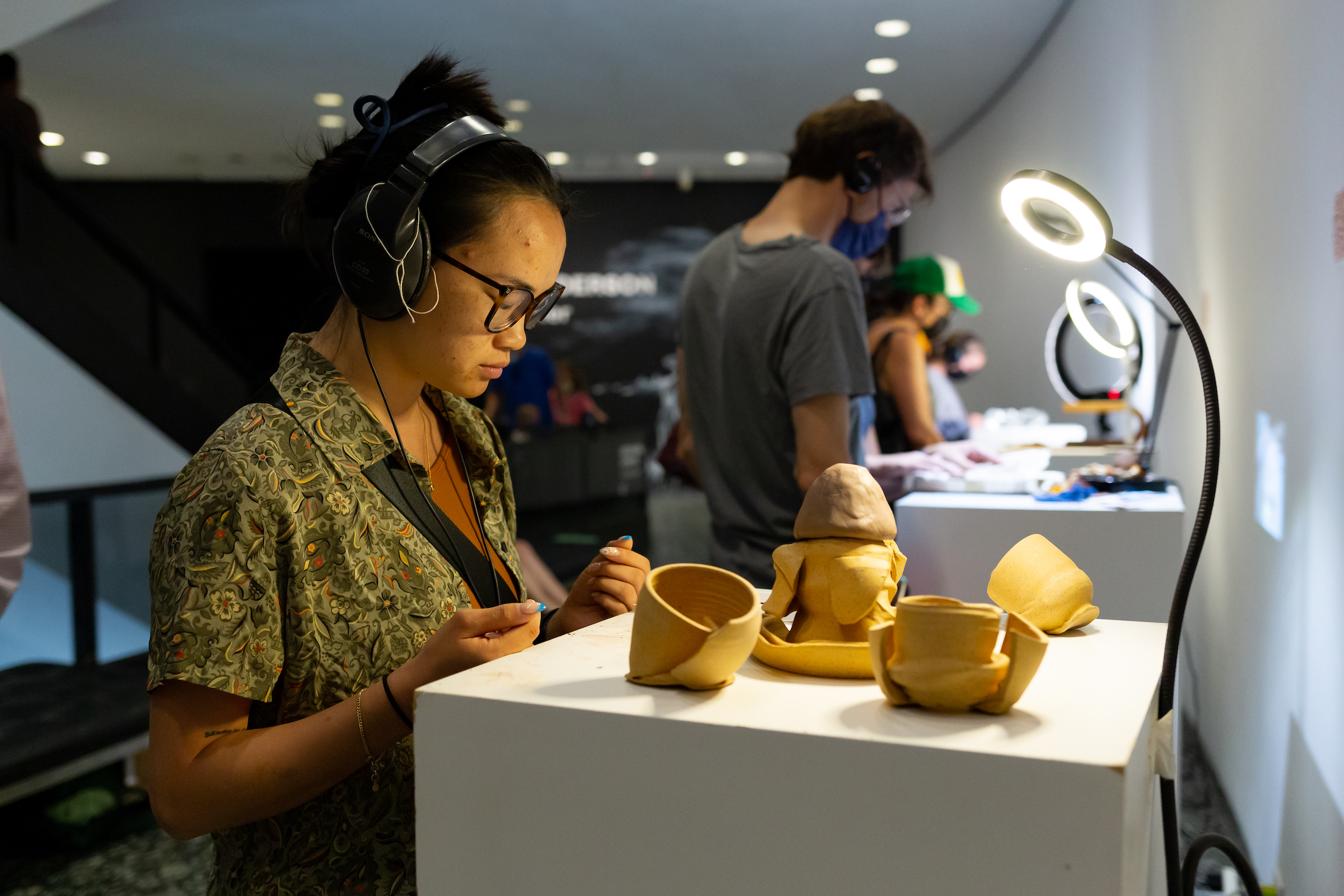
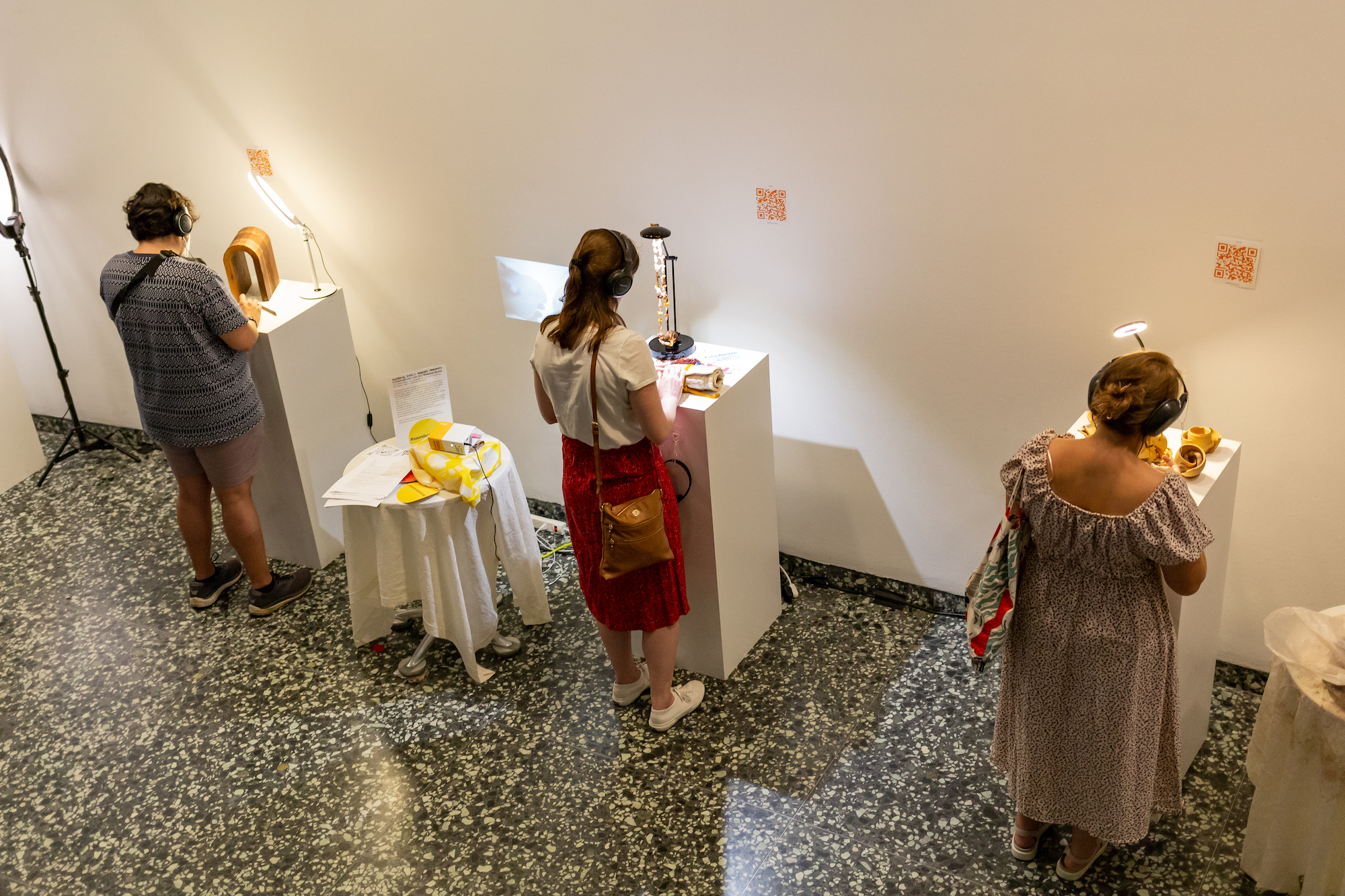
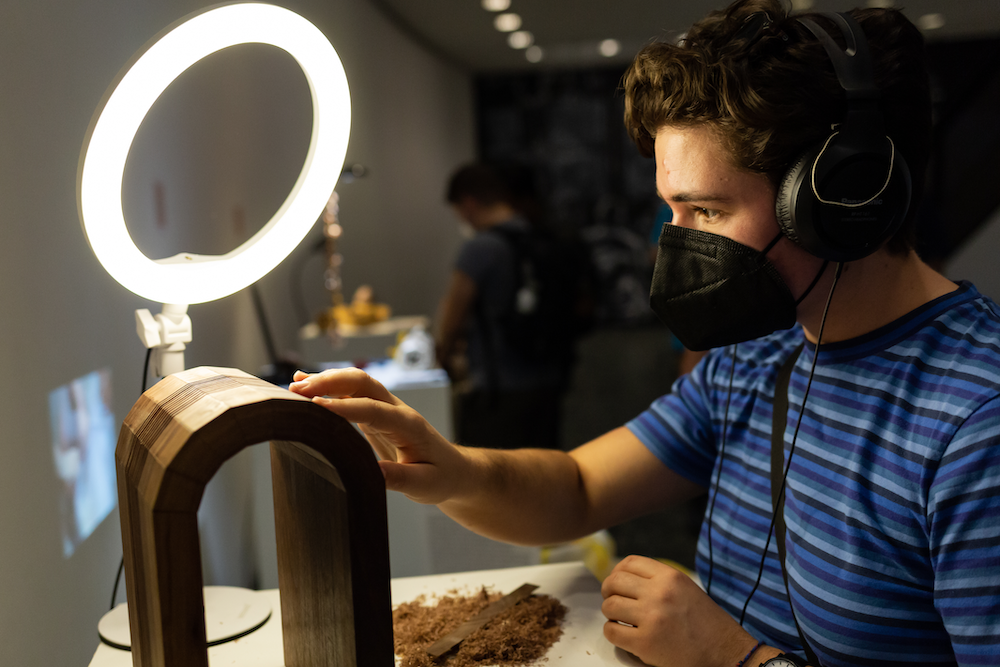
Multidisciplinary, Oakland-based artist Catherine Monahon brings Conversations with the Material World, four sculptures with four corresponding soundscapes, to MCLA's Gallery 51. Monahon is currently one of the artists-in-residence at The Walkway House downtown; they run Waveform Ceramics, a clay classroom in Oakland, and are using the time at the Tend Residency to strengthen their trauma-aware, healing-centered arts curriculum.
Through Conversations with the Material World, they invite visitors to engage with an interactive audio installation that celebrates our connection to our own creative impulses. This sensual, playful, interactive installation features sculptures made of glass, wood, fiber and clay. The work is made to be touched, designed by a collective of queer and/or non-binary artists. Each object is accompanied by a soundscape inspired by the material, maker and process.
The installation prioritizes engagement, play and introspection. Access to material knowledge and feeling safe to touch and explore the material world is a human right; this right isn’t always equally accessible to all. So much opportunity for connection is embedded in something as simple and commonplace as soft fabric or polished wood --reminders of the material world and opportunities to be intimate with materials are ever present. The soundscapes explore themes of intimacy, family, grief, home, tradition and identity. Slip on a pair of headphones, press play, and yes, you can touch the art!
Conversations with the Material World premiered at the Smithsonian's Hirshhorn Museum & Sculpture Garden as a part of Sound Scene Fest in June of 2022, with its West Coast debut last fall at Yerba Buena Night. Contributing artists include Philly-based sound designer Lizzy de Lise, San-Francisco-based furniture designer Dominique Tutwiler, Ohio-based fiber artist Selena Loomis and New York-based glassblower Deborah Czeresko. The work was conceived through Material Feels, a monthly art podcast Monahon produces that explores the intimate relationship between people and the materials they fall in love with.
Graduating senior Art Majors present 'Liminal Spaces: the Overlooked and Otherworldly.' This exhibit showcases imagery and ideas of being between spaces or times, such as ending college and beginning life outside of school, or finding one's way through changes of the pandemic's impacts on our lives, to subtler states of being that are often overlooked or fantasized. Each student approaches these larger themes in different ways through their artworks. Eloise Baker's installation relates to hidden computer code made apparent through weaving; Tiffany Ferreira's collage-paintings pull together common elements from nature, living, and dying; Rachel Zemsky's imagery activates considerations of burn-out and recovery; whereas Deinara Seamans' colorful rabbits implore us to consider folklore passing through our attention; Joseph Vigiard's drawings imply dreams of the past and the future; and Delano Mill's comics detail stories of moving through revenge to difficult truths.
See the exhibit catalog HERE!
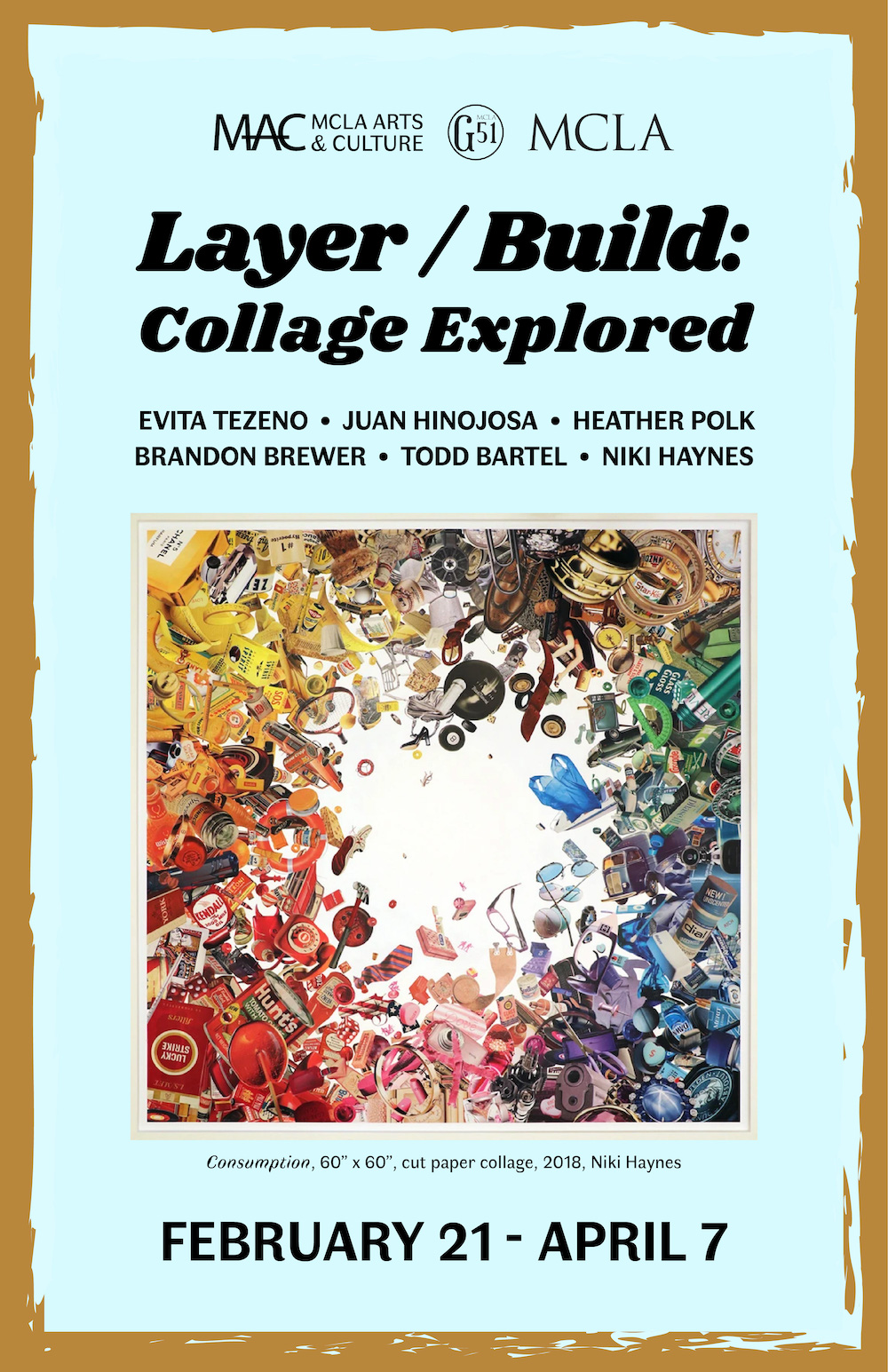
Evita Tezeno • Juan Hinojosa • Heather Polk • Brandon Brewer • Todd Bartel • Niki Haynes
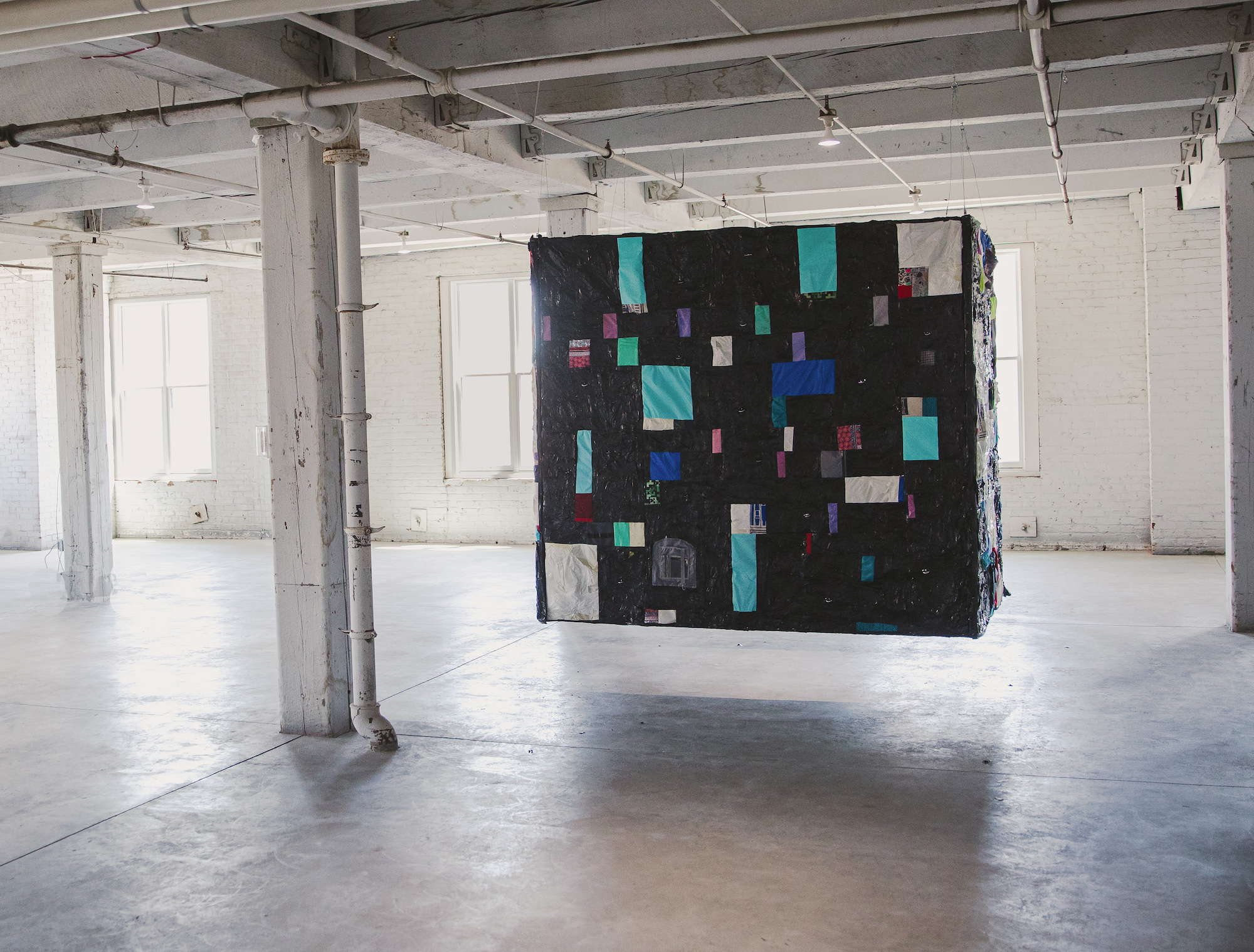
Nathaniel Donnett is an interdisciplinary cultural practitioner born in Houston, Texas. His practice holds metaphysical and phenomenological spaces that explore space/time, history, notions of being, the in/exterior, and race. Black aesthetic traditions, music, refusal, fractal theory, incompleteness, and sacred geometry are strategies and systems he uses to challenge conventional timeline narratives and Western frameworks. Donnett fuses immaterial and material worlds to expand the meaning and understanding around sociopolitical concerns and liminal spaces that impact underrepresented people and overlooked conditions.
To Know A Veil, Donnett's solo exhibition, consists of wall works, sculptures, an installation, and sound that investigate concerns about fragmentation, memory, erasure, the self, and interiority. The exhibition borrows its title from W. E. B. Du Bois's classic book The Souls of Black Folk. In that work, the Veil signifies racism and the accompanying moral perception of Black America. Donnett also draws on Fred Moten's notion of enclosure—a psychological entrapment caused by social precarity. In the context of this exhibition, enclosure manifests as institutional and societal forces that continuously place freedom from, or freedom of, in a hold, as a type of possession, ownership, or suppression. Donnett questions how individuals navigate enclosures that frame groups of people as reductive, noncomplex categories instead of plural, complex beings.
During the Massachusetts College of Liberal Arts Artist Lab Residency, Donnett invited students from Berkshire County's Pine Cobble School, Berkshire Arts and Technology Charter Public School, and MCLA to participate in this exhibition. They collaborated on a backpack exchange during which the students were given new backpacks in exchange for their old bags. The students also recorded interviews with Donnett that he then used to create an experimental sound piece.
One of the central works in the exhibition, a sound sculpture entitled Veil (2022), connects Donnett's interest in music, everyday poetics, spirituality, and cosmological and sci-fi phenomena. Veil provides the viewer with the language of abstraction, coding strategies, and improvisation by building on data visualization, the same process Du Bois implemented to translate social and racial issues into visual graphics. Musical notation is also employed as a visual language to reference the Black national anthem "Lift Every Voice and Sing" by James Weldon Johnson. The conceptual and aesthetic approach of the piece expands the range of ideas regarding enclosure by combining sound and materiality—and through the process of collaborating with the students.
To Know A Veil communicates the power of imagination as an intermediary, catalyst, and portal that occupies spaces between being and becoming, continuously challenging modern-day ideologies, which stem from our past and impact our future. There is no definitive beginning or end when imagining possibilities, complex positions, or solutions—only human conditions embedded between moments of learning, reflecting, and doing
This work was funded, in part, by the National Endowment for the Arts.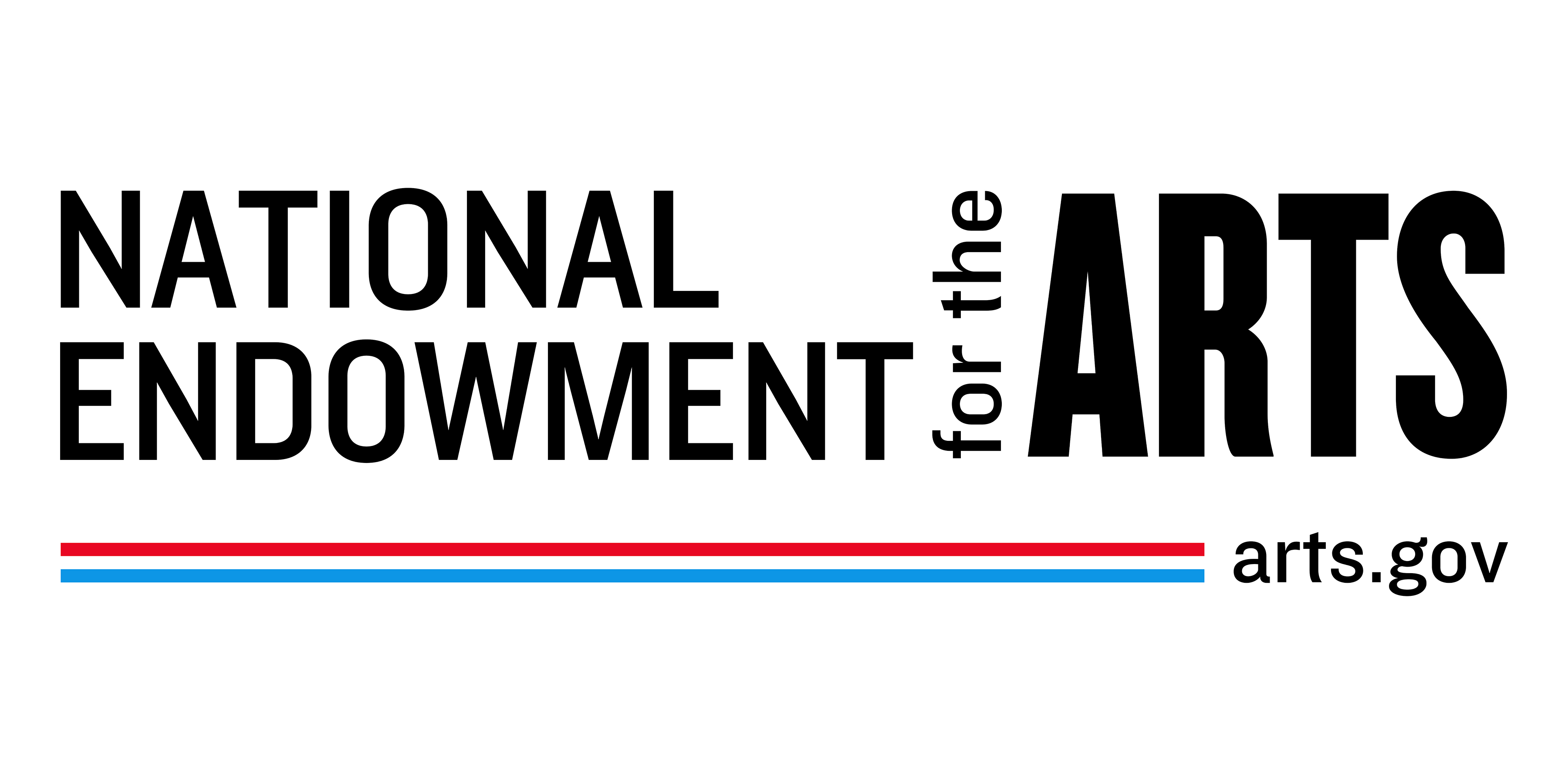

What happens if February never ends?
february is a digital collage series by Lorenzo Baker that expands and explores the definitions of Black History. Looking at history from a unique vantage point, the daily project offers viewers insight into what is commonly known as Black History Month.
The push for celebrating Black History Month began in the 1920s, with the work of Historian Carter G. Woodson, who proposed in 1926 that, "It is not so much a Negro History Week as it is a History Week. We should emphasise not Negro History, but the Negro in History. What we need is not a history of selected races or nations, but the history of the world void of national bias, race hatred and religious prejudice". Motivated by the achievements Carter. G Woodson, february extends the argument that the achievements, moments, and record of Black people should be commemorated well beyond the standardized 28/29-day long window.
Sourcing from the principles of Afrofuturism, which override western approaches to time, space, and meaning, february began by addressing the question “what happens if February never ends?” Utilizing historical photographs, documents, illustrations, and images sourced from the internet, the artworks bend the viewers understanding of what is worth historizing. As a daily meditation on Black History, each artwork blends and incorporates new or obscure information and data into depictions of well-known and unfamiliar icons within the black historical cosm
Puff gathers its inspiration from the first Anthology of African American Literature, Les Cenelles: Choix de poésies indigènes. Published in 1845, the Anthology is a collection of French lyric poems written by a group of free Black poets living in New Orleans, LA. Connecting with the Anthologies' use of depoliticized themes of fantasy, longing, and harmony. Baker's multimedia installation is an airy and melodic take on the Black romantic experience.
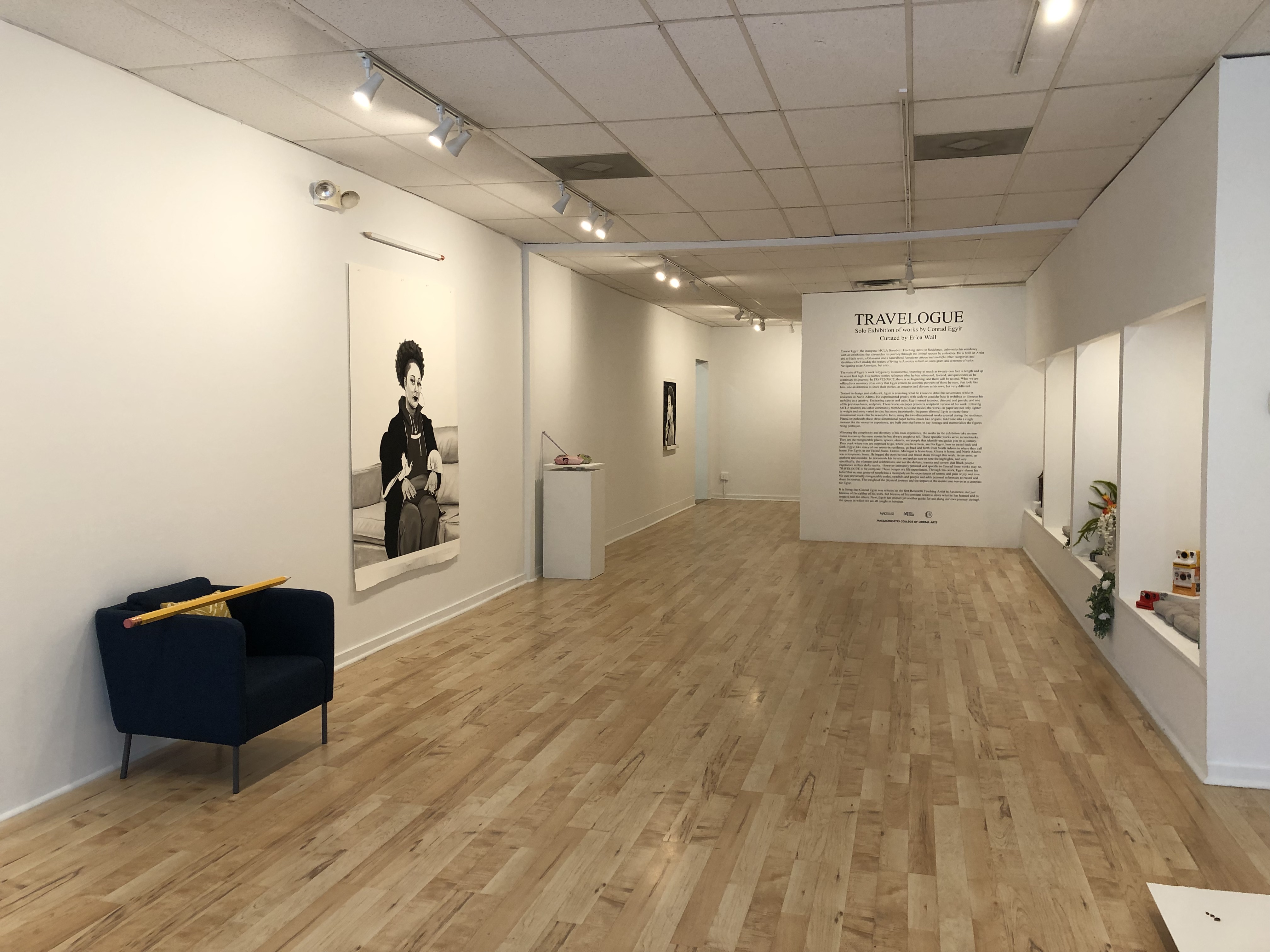
Conrad Egyir, the inaugural MCLA Benedetti Teaching Artist in Residence, culminates his residency with an exhibition that chronicles his journey through the liminal spaces he embodies. He is both an Artist and a Black artist, a Ghanaian and a naturalized American citizen and multiple other categories and identities which muddy the waters of living in America as both an immigrant and a person of color. Navigating as an American, but also…
The scale of Egyir’s work is typically monumental, spanning as much as twenty-two feet in length and up to seven feet high. His painted stories reference what he has witnessed, learned, and questioned as he continues his journey. In TRAVELOGUE, there is no beginning, and there will be no end. What we are offered is a summary of an entry that Egyir creates to combine portraits of those he sees, that look like him, and an intention to share their stories, as complex and diverse as his own, but very different.
Trained in design and studio art, Egyir is revisiting what he knows to detail his adventures while in residence in North Adams. He experimented greatly with scale to consider how it prohibits or liberates his mobility as a creative. Eschewing canvas and paint, Egyir turned to paper, charcoal and pastels, and one of his previous loves, sculpture. These works on paper present a sculptural version of his work. Enlisting MCLA students and other community members to sit and model, the works on paper are not only lighter in weight and more varied in size, but more importantly, the paper allowed Egyir to create three-dimensional works that he wanted to form, using the two-dimensional works created during the residency. Placed on pedestals these three-dimensional paper forms, much like origami, fold time into a single moment for the viewer to experience, are built onto platforms to pay homage and memorialize the figures being portrayed.
Mirroring the complexity and diversity of his own experience, the works in the exhibition take on new forms to convey the same stories he has always sought to tell. These specific works serve as landmarks. They are the recognizable places, spaces, objects, and people that identify and guide you on a journey. They mark where you are supposed to go, where you have been, and for Egyir, how to travel back and forth. Egyir, like many of our artists-in-residence, go back and forth from North Adams to where they call home. For Egyir, in the United States, Detroit, Michigan is home base, Ghana is home, and North Adams was a temporary home. He logged the steps he took and traced them through this work. As an artist, an explorer and recorder, he documents his travels and makes sure to note the highlights, and very specifically, the triumphs and celebrations, and not the defeats, trauma and sorrow that Black people experience in their daily reality. However intimately personal and specific to Conrad these works may be,
TRAVELOGUE is for everyone. These images are life experiences. Through this work, Egyir shares his belief that no one group of people has a monopoly on the experiences of sorrow and pain or joy and love. He uses universally recognizable codes, symbols and people and adds personal references to record and share his entries. The weight of the physical journey and the impact of the mental one serves as a compass for Egyir.
It is fitting that Conrad Egyir was selected as the first Benedetti Teaching Artist in Residence, not just because of the caliber of his work, but because of his constant desire to share what he has learned and to create a path for others. Now, Egyir has created yet another guide for use along our own journey through the spaces in which we are all caught in between.
![]()
![]()
![]()
MCLA Gallery 51 will host Stigmas and Stories featuring artwork from students in the classes of 2020, 2021, 2022 . Join us in-person on Friday, May 6th, 2022, for an opening reception from 5 p.m.- 6: 30 p.m. Refeshments will be served.
This exhibition will feature three graduating senior artists: Kennedy Sobon, Nhi Lam, and Ana Sheehy, as well as the work from now alums from the 2020 and 2021 classes.
Spanning across mediums, the artists explore how art can re-tell and re-shape common narratives. From mental illness, to fairytales and culture, this exhibition shows how artists use their mediums to explore the different facets of storytelling- by telling our own personal stories or the stories from our cultures.
Kennedy Sobon ’22 is an artist who uses fashion as a vehicle to explore her relationship with mental illness and self-love. She states that “my artwork is an extension of myself. It gives meaning to what my words cannot.”
Nhi Lam ’22 works primarily in digital art, and through her large poster illustrations she explores her Vietnamese culture, and the experiences that come from growing up with both American and Vietnamese influences.
Ana Sheehy ’22 uses an array of traditional mediums. Through the image of the unicorn, they explore how different mediums affect the ways that we experience art, stating that “every medium has its own baggage comes from the social biases we impose on it, and we cannot look at a piece of art without acknowledging that social baggage.”
This exhibition will also serve as a celebration of returning to in-person exhibitions. “The past two years have really taken a toll on our art students. It’s hard to make art in a remote situation! As a result, the class of ’22 will be inviting alumni from the past two years to join the show to re-exhibit their student artwork, or some of their most recent endeavors,” said Professor Melanie Mowinski, advisor to art students, along with Professor Greg Scheckler.
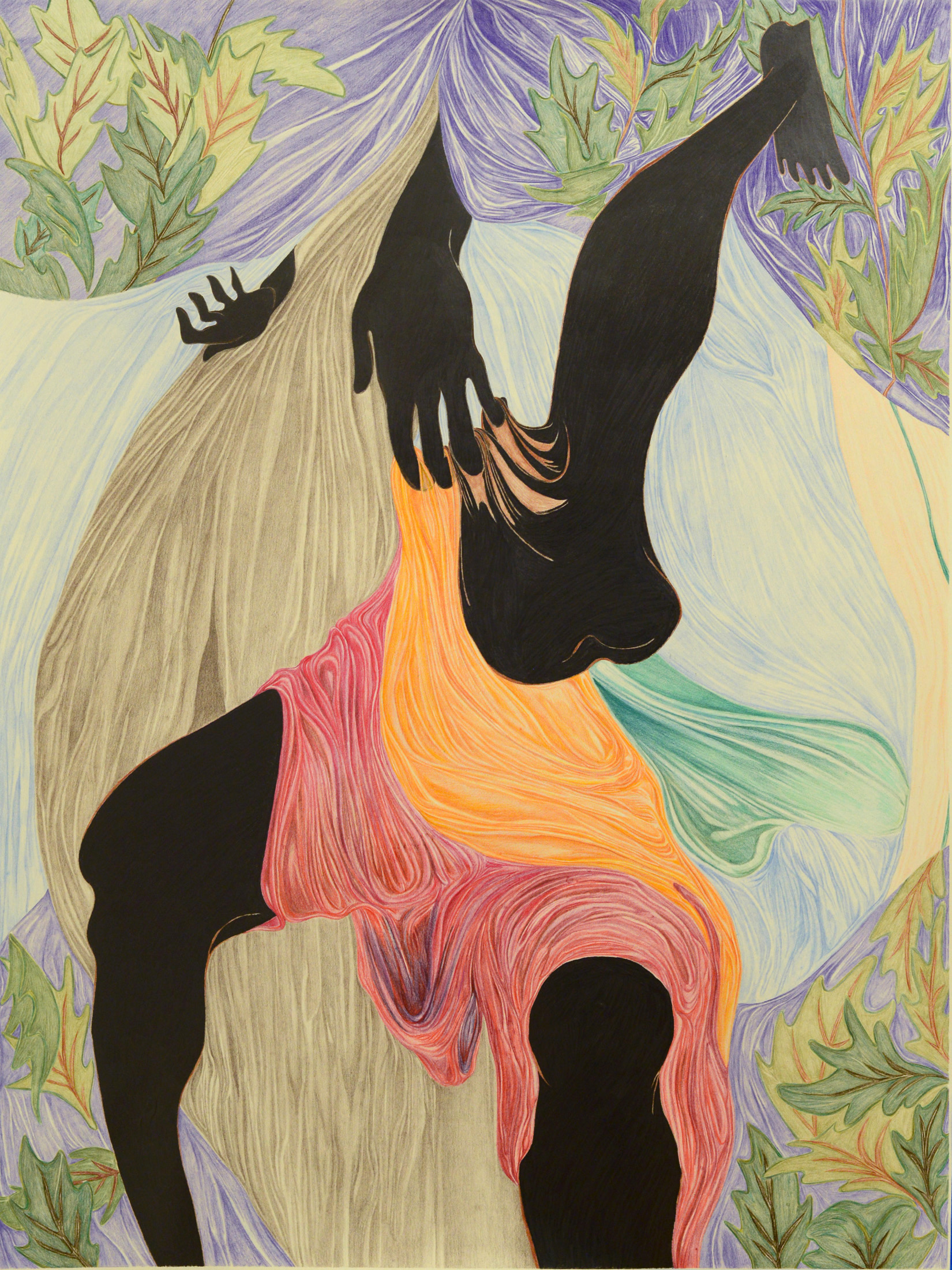
This body of work by Ross is a representation of his continued search to bring the world, as he sees it, to life. Self-identified as a photographer, Ross reveals his talent for using pencil and exploring the palette beyond imagination.
Come inside is an invitation for viewers to participate in Ross’s journey through the works. It invites us to be present as we navigate through images which are intentionally disorienting, necessarily so, to more fully experience his perspective. Ross’s works can be viewed as an exercise in finding comfort within the discomfort, as well as being unclear about the orientation of the work and the viewer’s relationship to it. For Ross, drawing is a type of performance, similar to what a painter may experience as the brush touches the canvas. The dozen large- and small-scale colored pencil drawings are meticulous, precise, and abstract, but still represent what is organic.
Ross also questions weight and opacity, central components of his practice. In these works, he creates a place to better discuss Blackness or Darkness, history, space and contexts, versus the conventional ways and spaces. These works are environments with figures, in which the viewer has to question their gaze. Ross has searched for what he wants to see in what he sees. Instead of looking head-on at what is in his range of vision, he looks to the sides and the corners, searching for what is not in view. Ross proposes we de-center our view and step inside his spaces to see what he sees.
Influenced by the likes of Faith Ringgold, David Hammons, Charles White, Kerry James Marshall, and many others, Ross pursues an inquiry into their work and use of materials. He challenges the capacity of the pencil to explore Blackness. Figures are created in Ross’s own design and space. He also creates the feeling of movement throughout the works, a reference to a dependency which Ross creates between the materials, his labor, the scale, their presence in space, and his intention for the work. He strives to defy notions of what drawings can be, and should do, as works of art. Neither sketches nor studies, these are final works, and a testament to the power of Ross’ ability to work in this medium.
The details in the works are powerful and significant, nothing is random or insignificant. The work focuses on the interaction between color and light. This intersection, or perhaps conflict, is where the photographer is conversing with the draftsman. It challenges convention, and in the process, Ross designs a world of spaces and figures that do not have to subscribe to the rules of reality or perspective. Ross’ original forms, spaces and contexts, tempt the viewer into exploring, experiencing, questioning, and then applying that to their own perspective on life. The work articulates for Ross what he sees, and we may never see, unless the viewer gazes upon his work and chooses to come inside.
Come inside culminates Ross’s work completed as an MCLA ART LABORATORY Resident in Fall 2021.
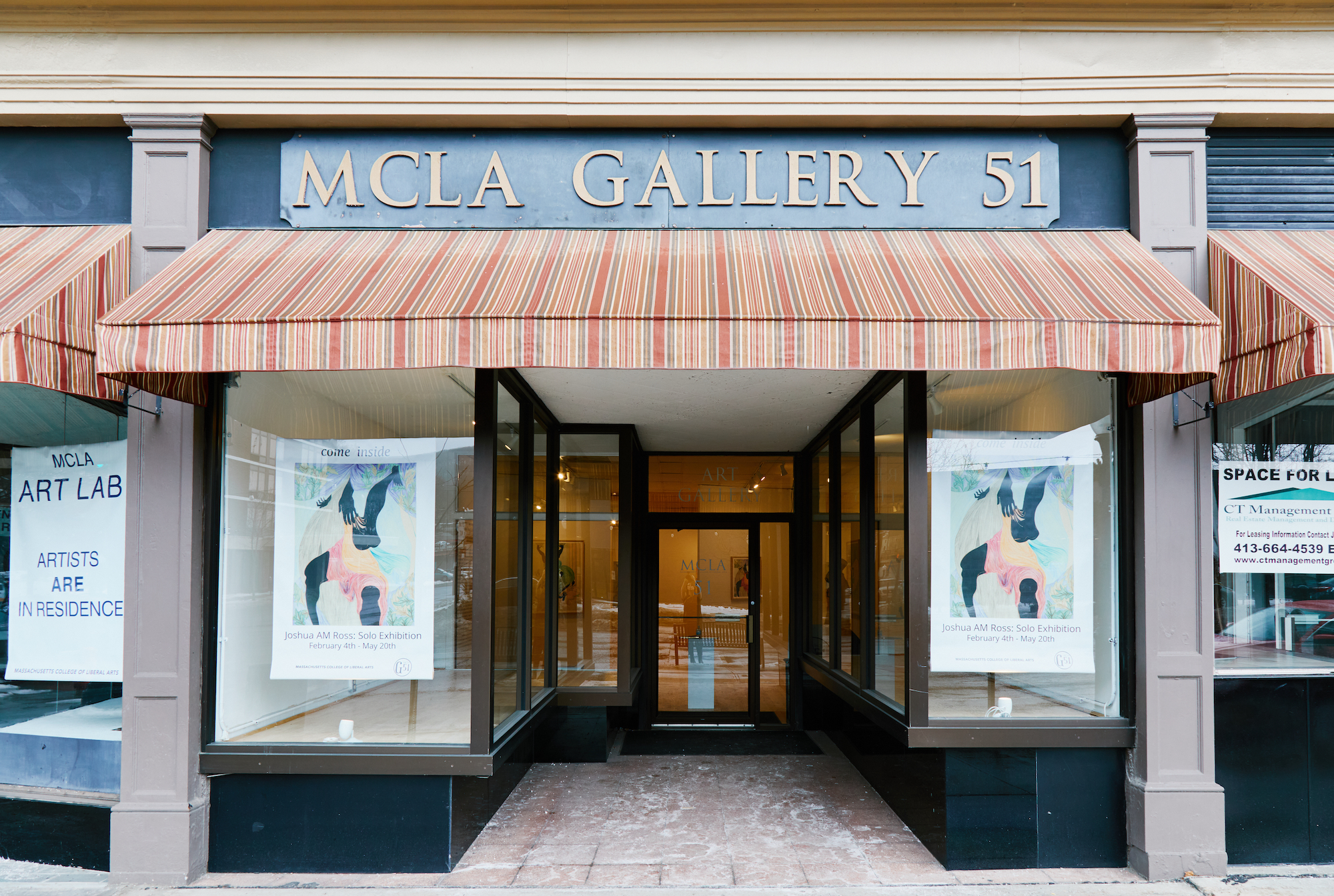
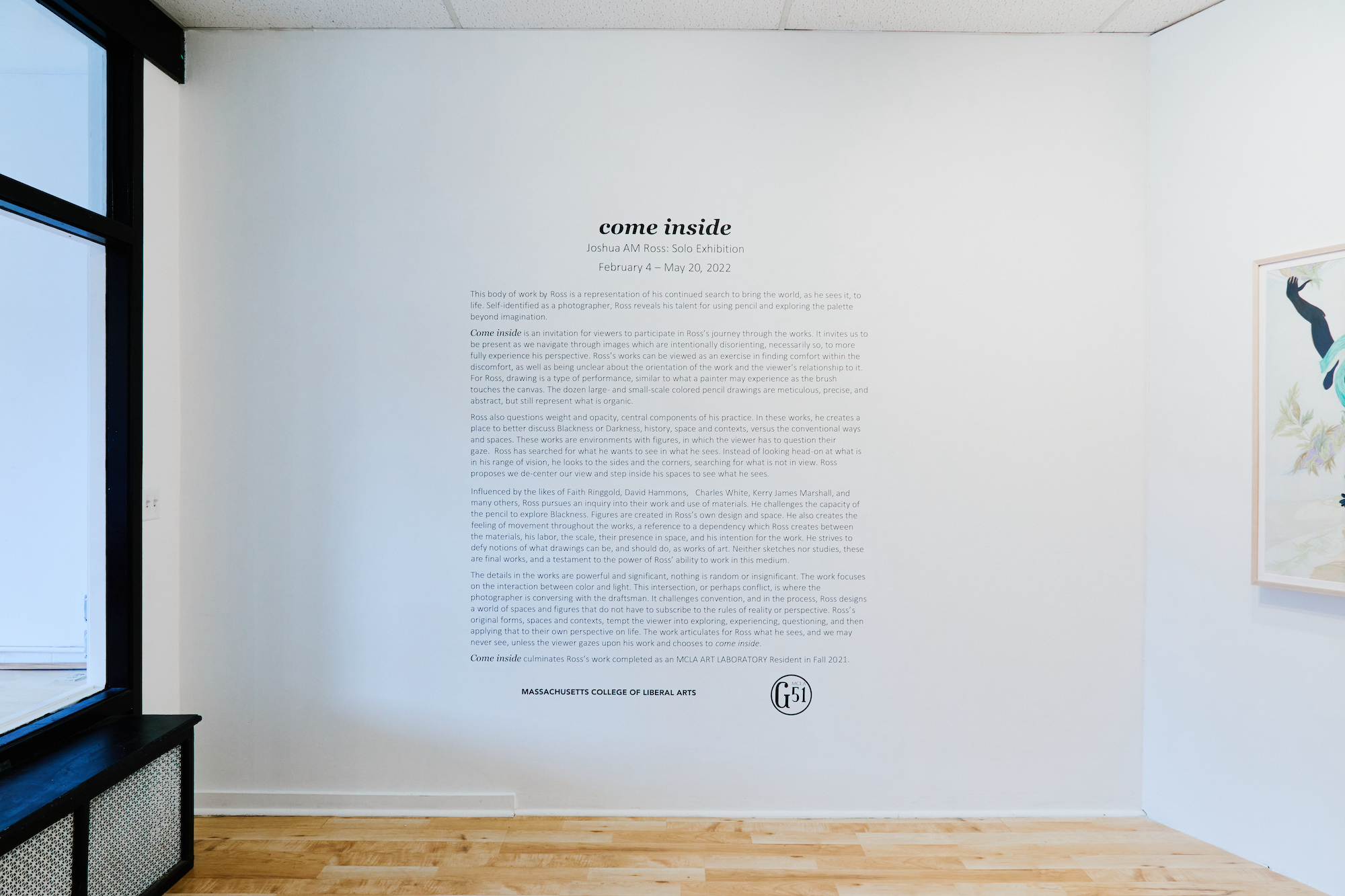
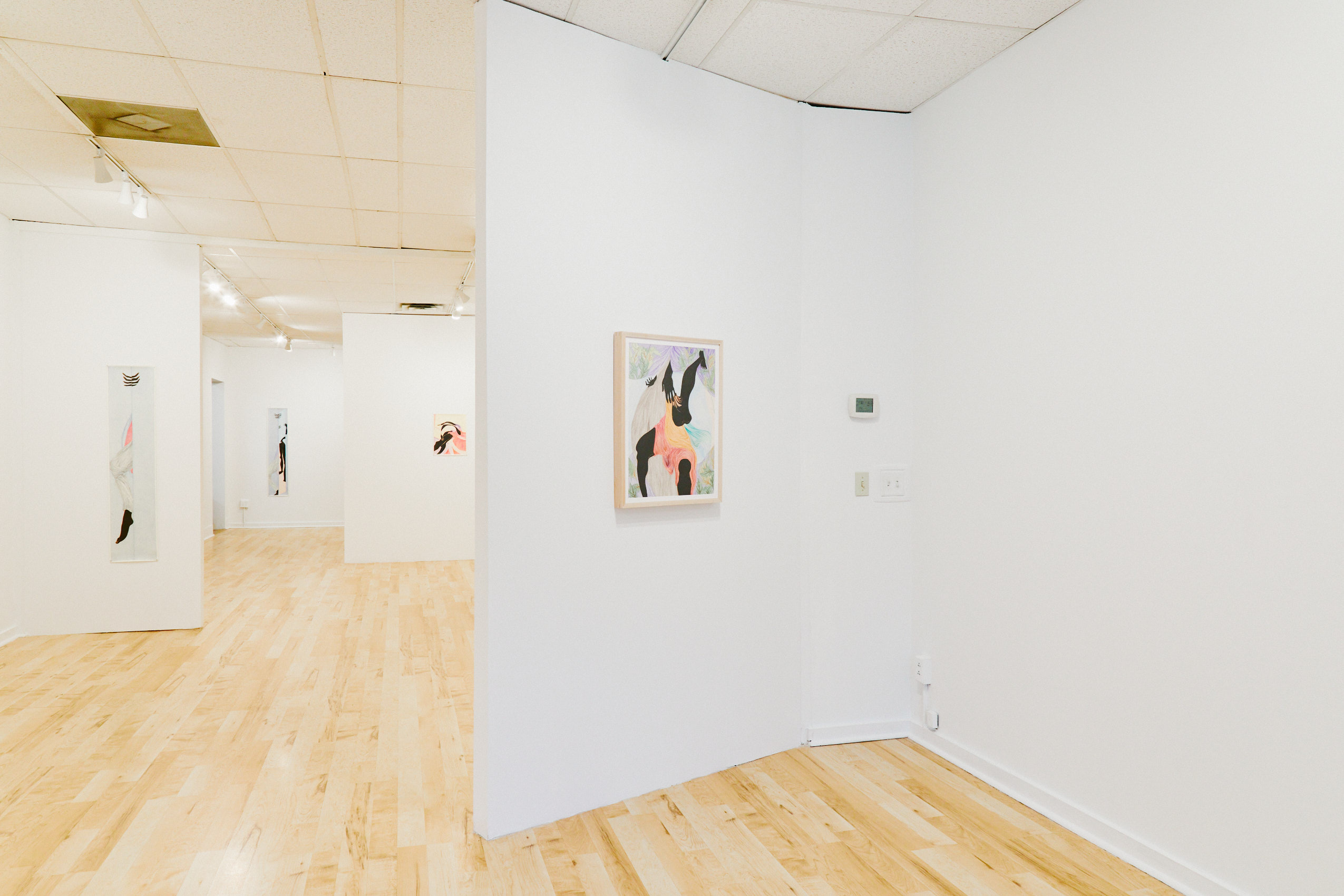
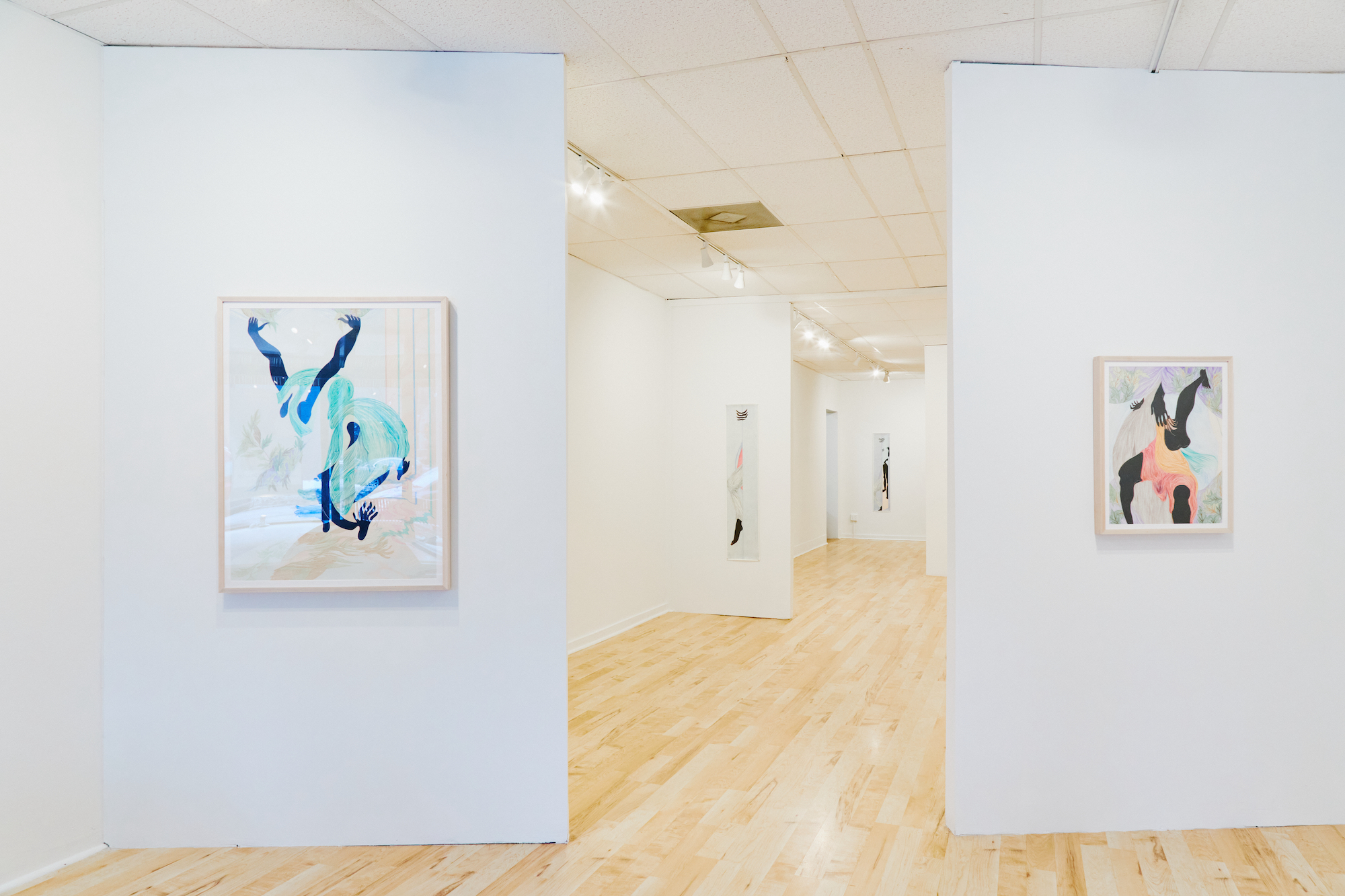
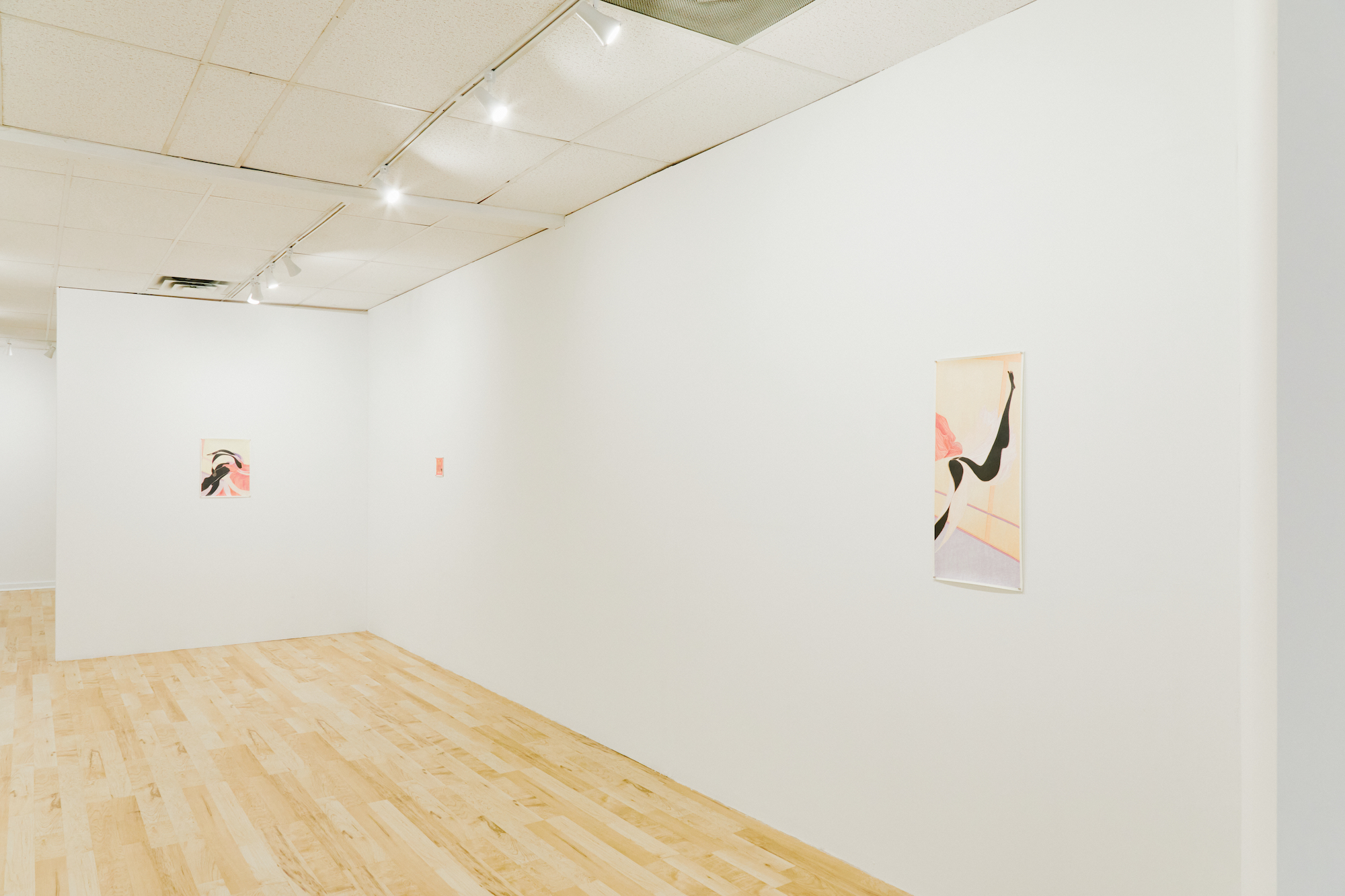
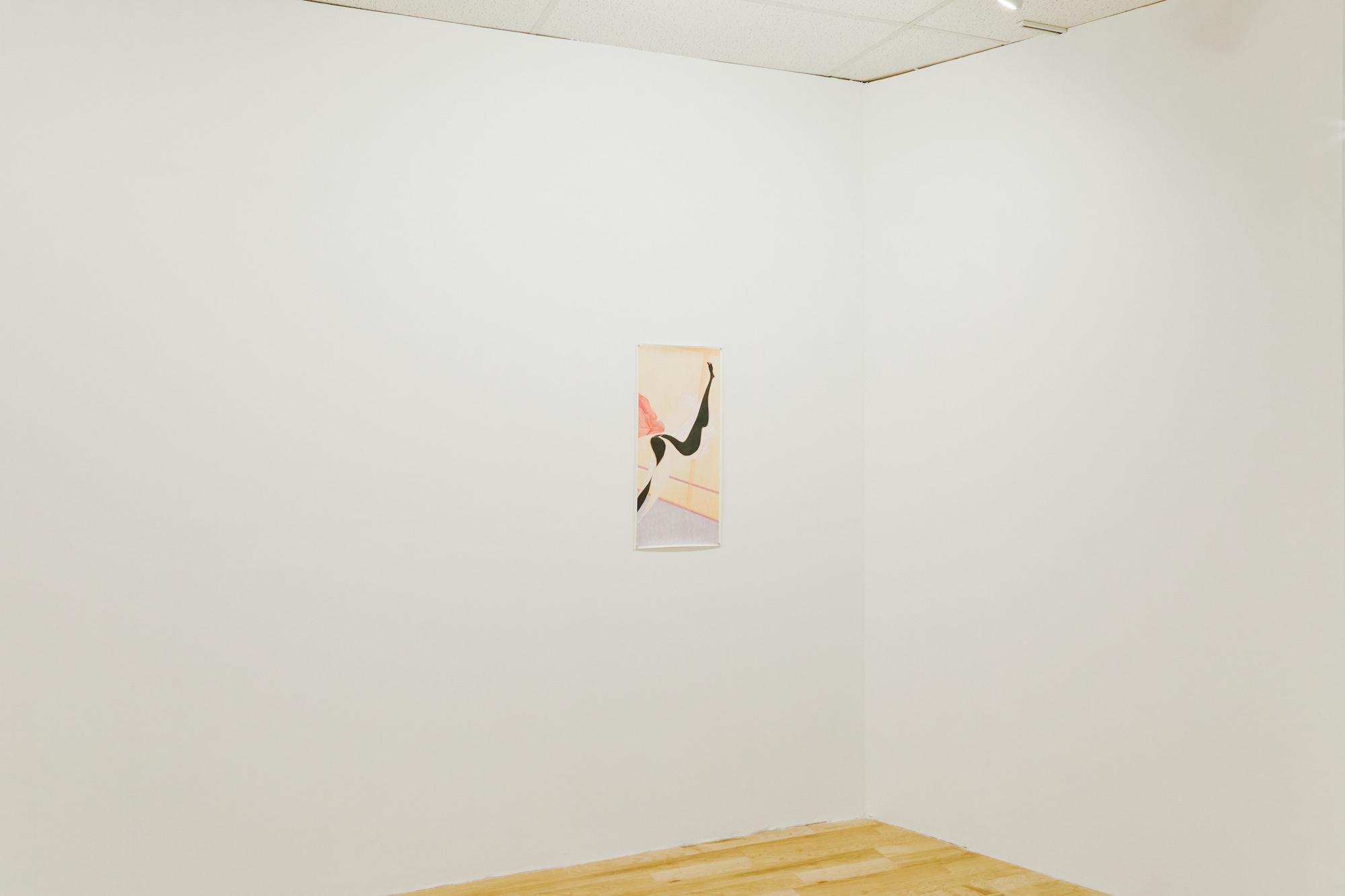
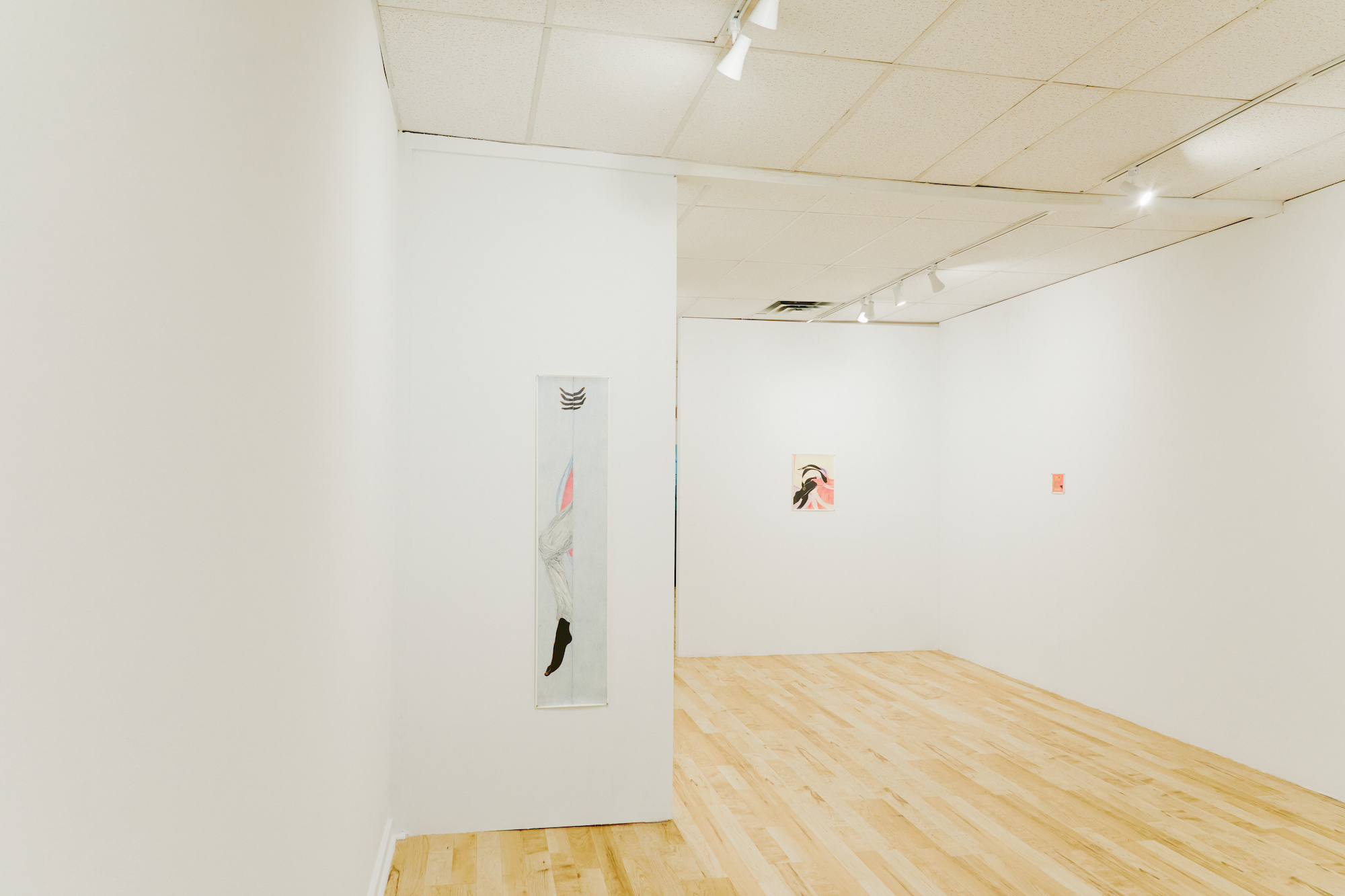
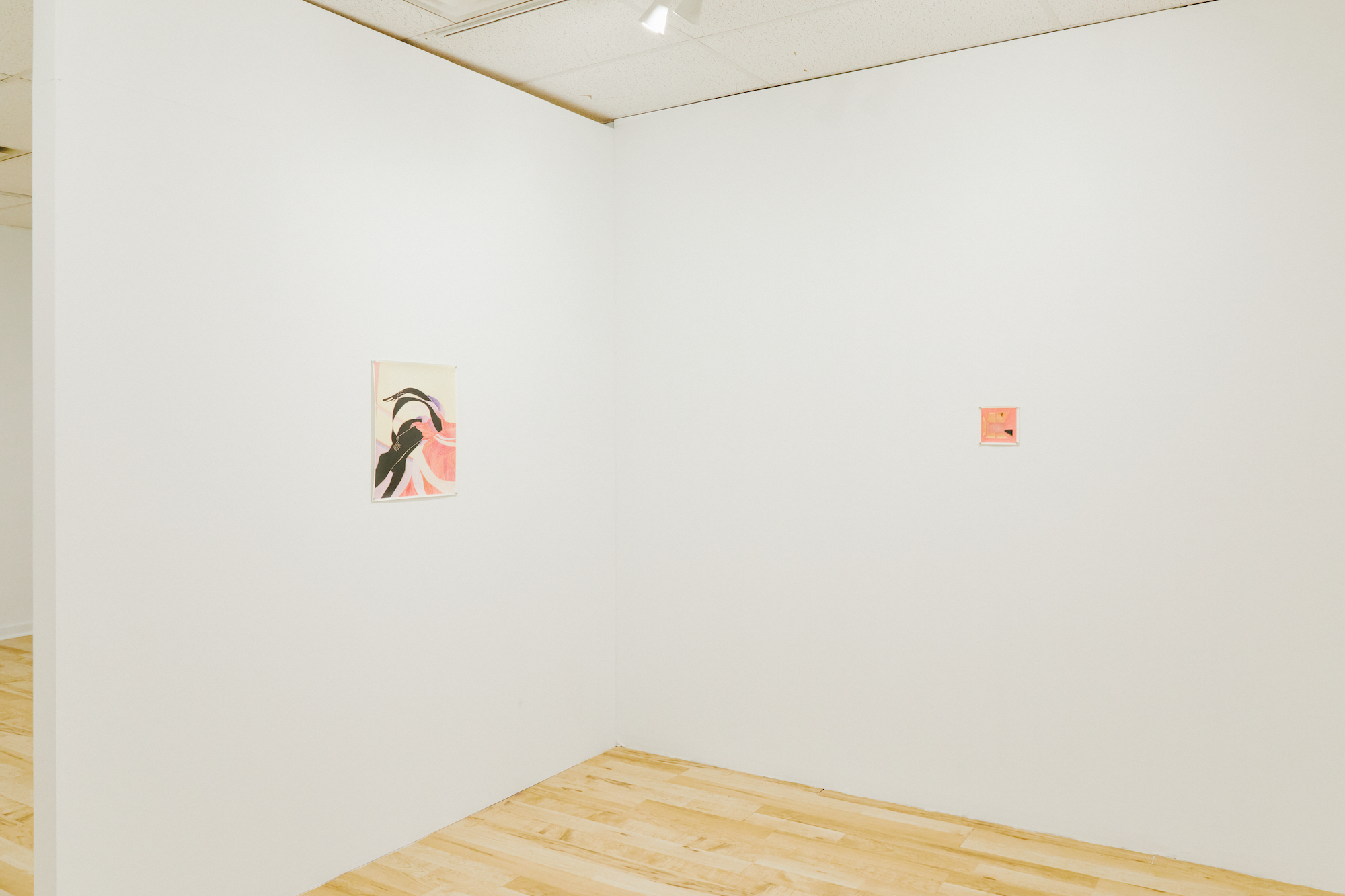
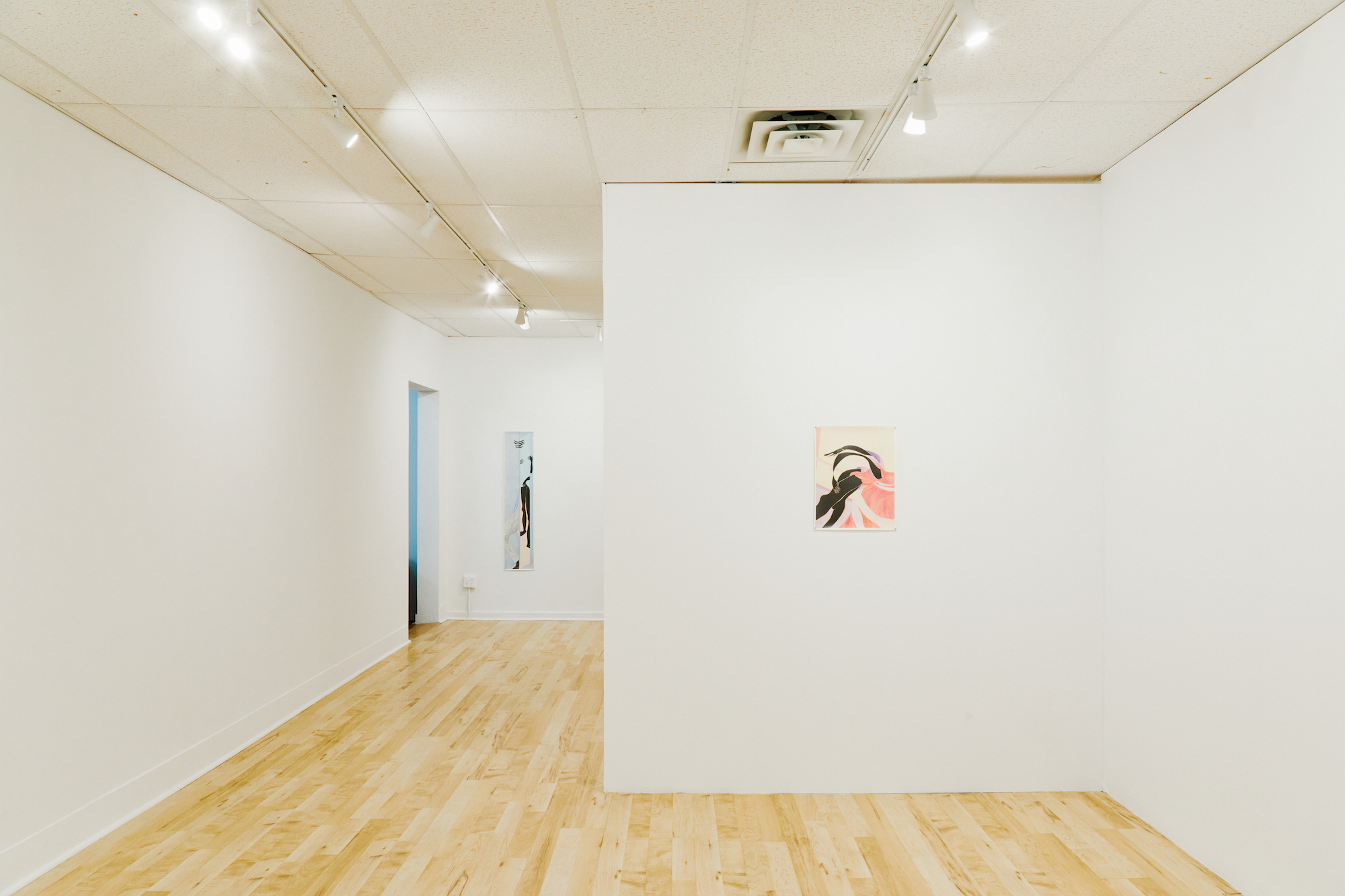
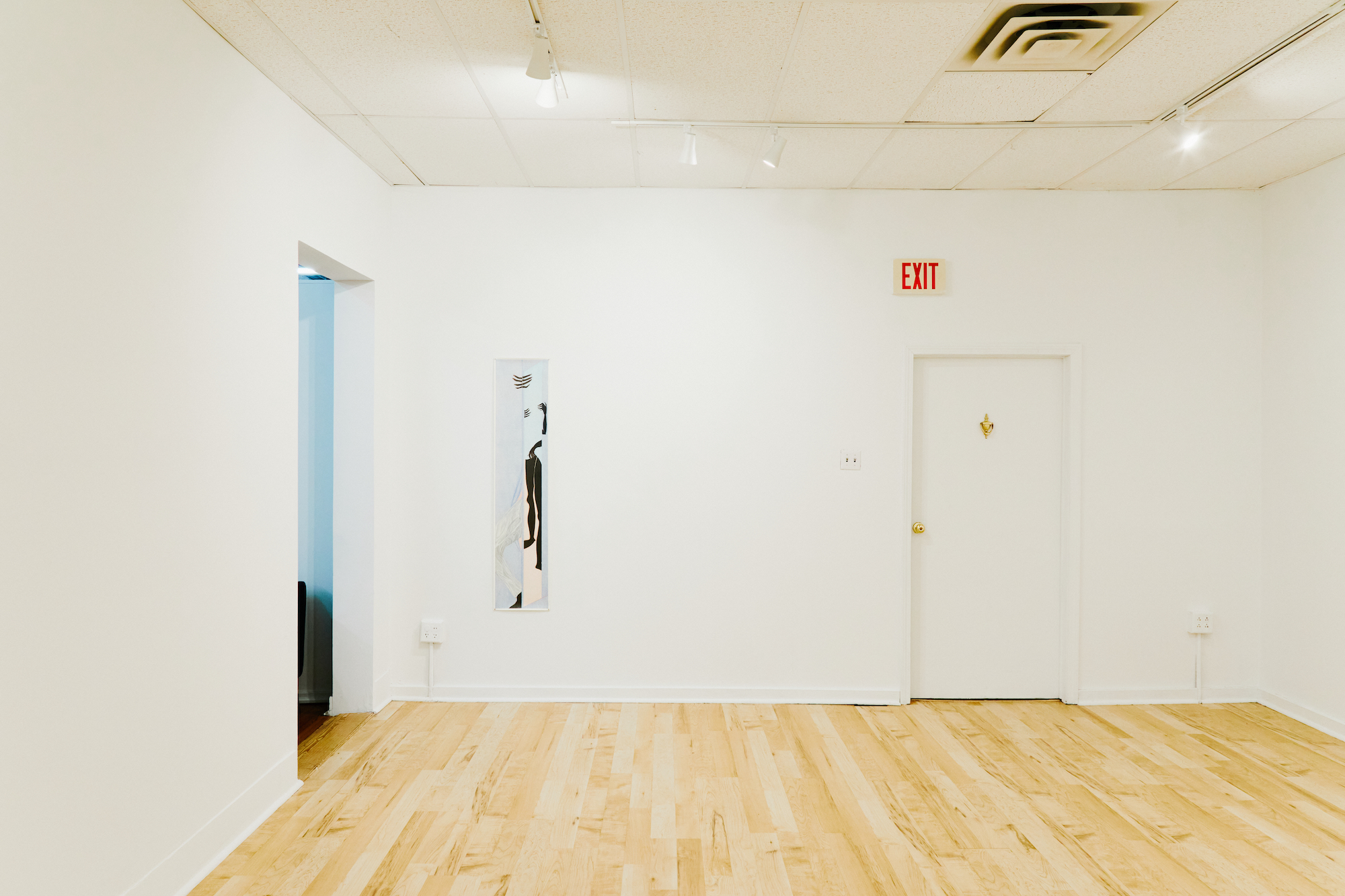
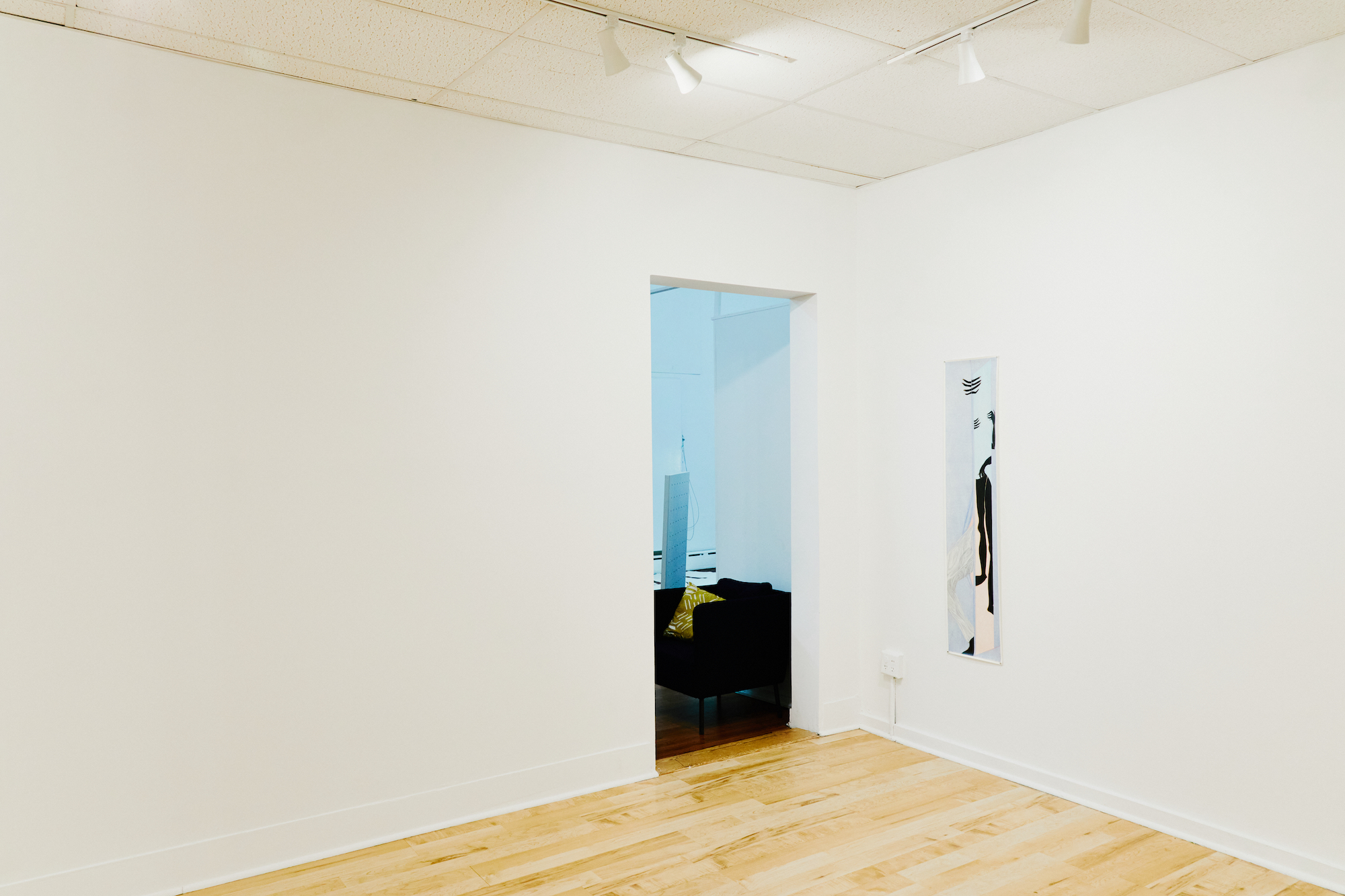
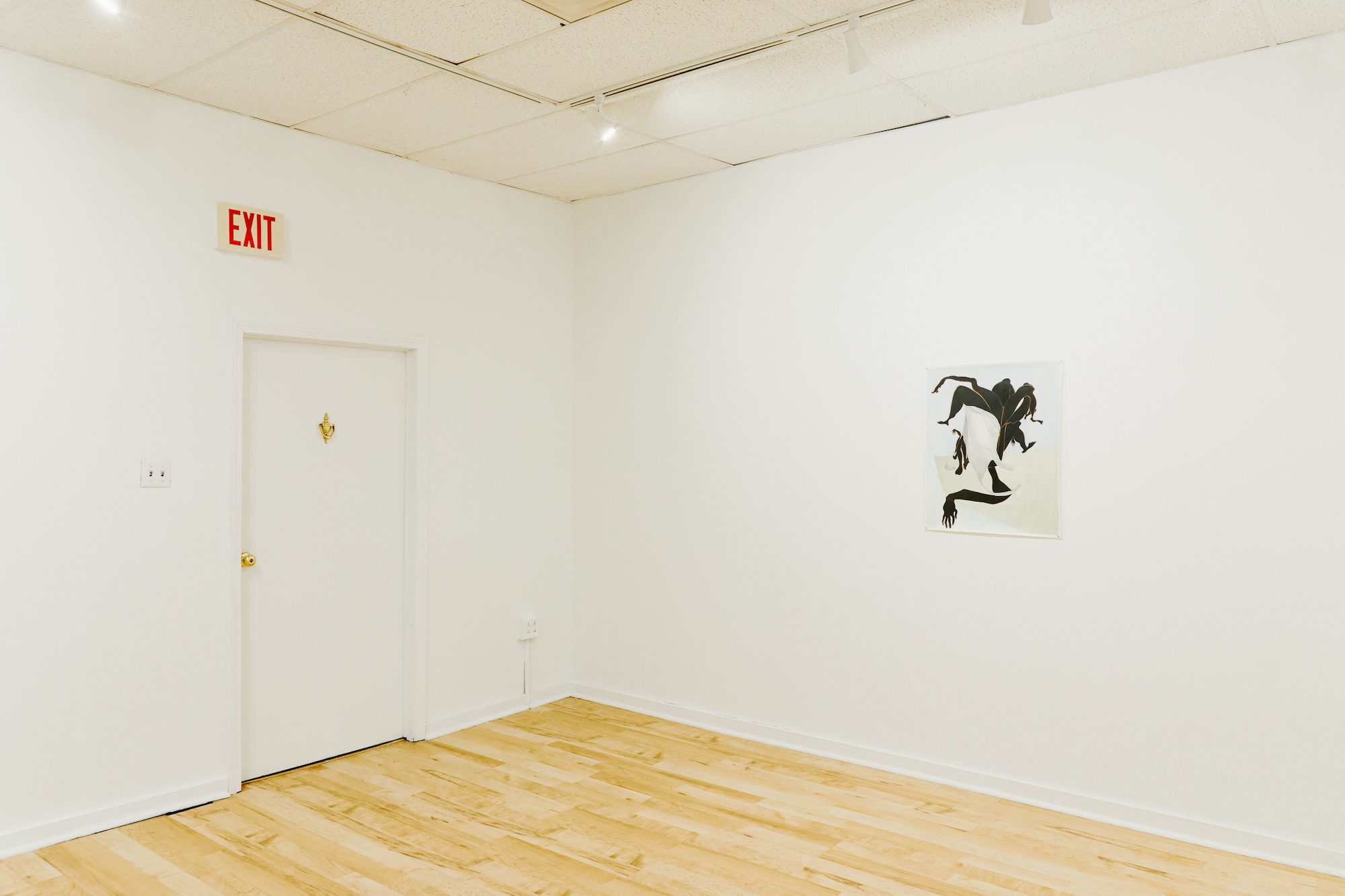
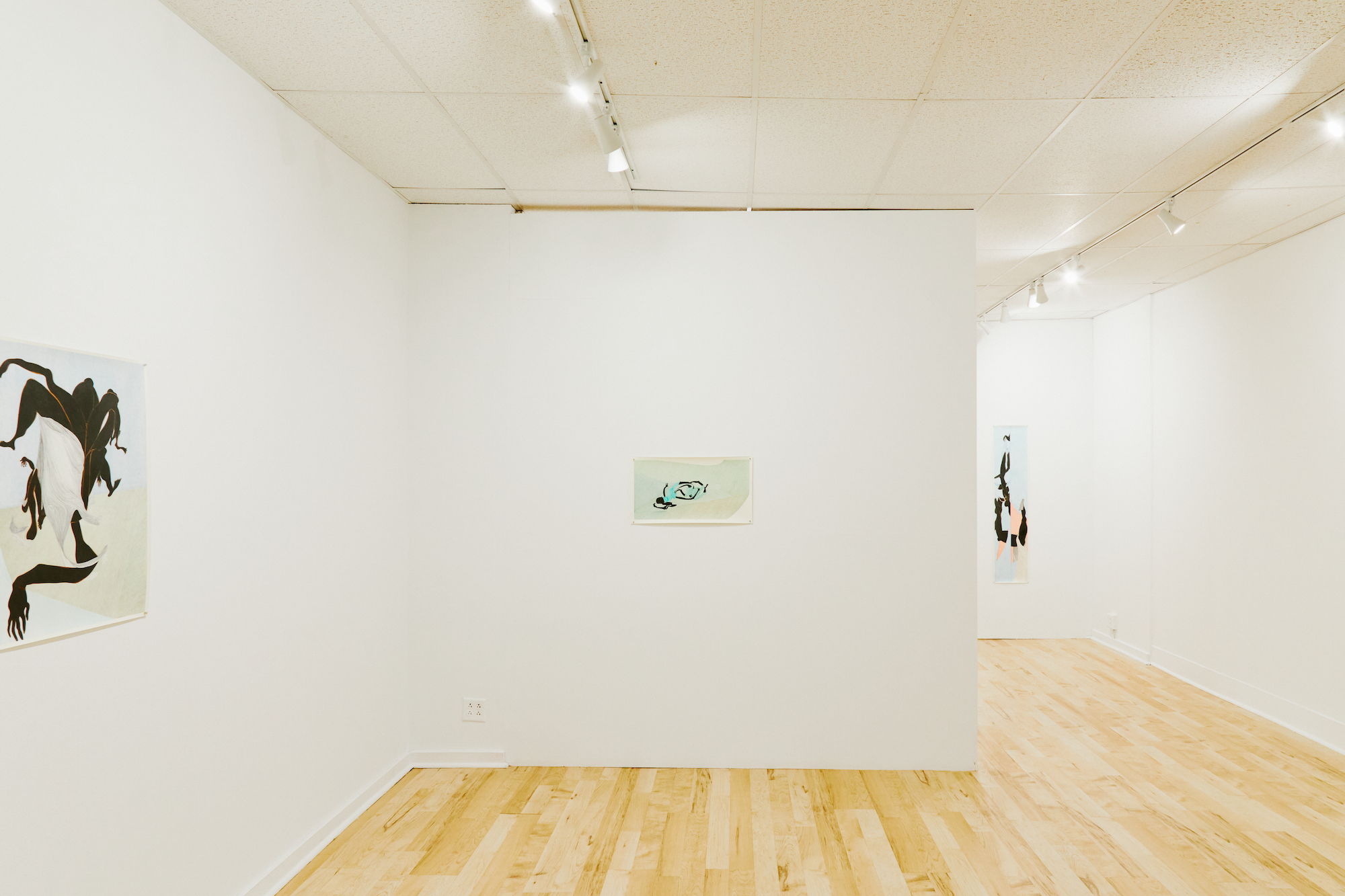
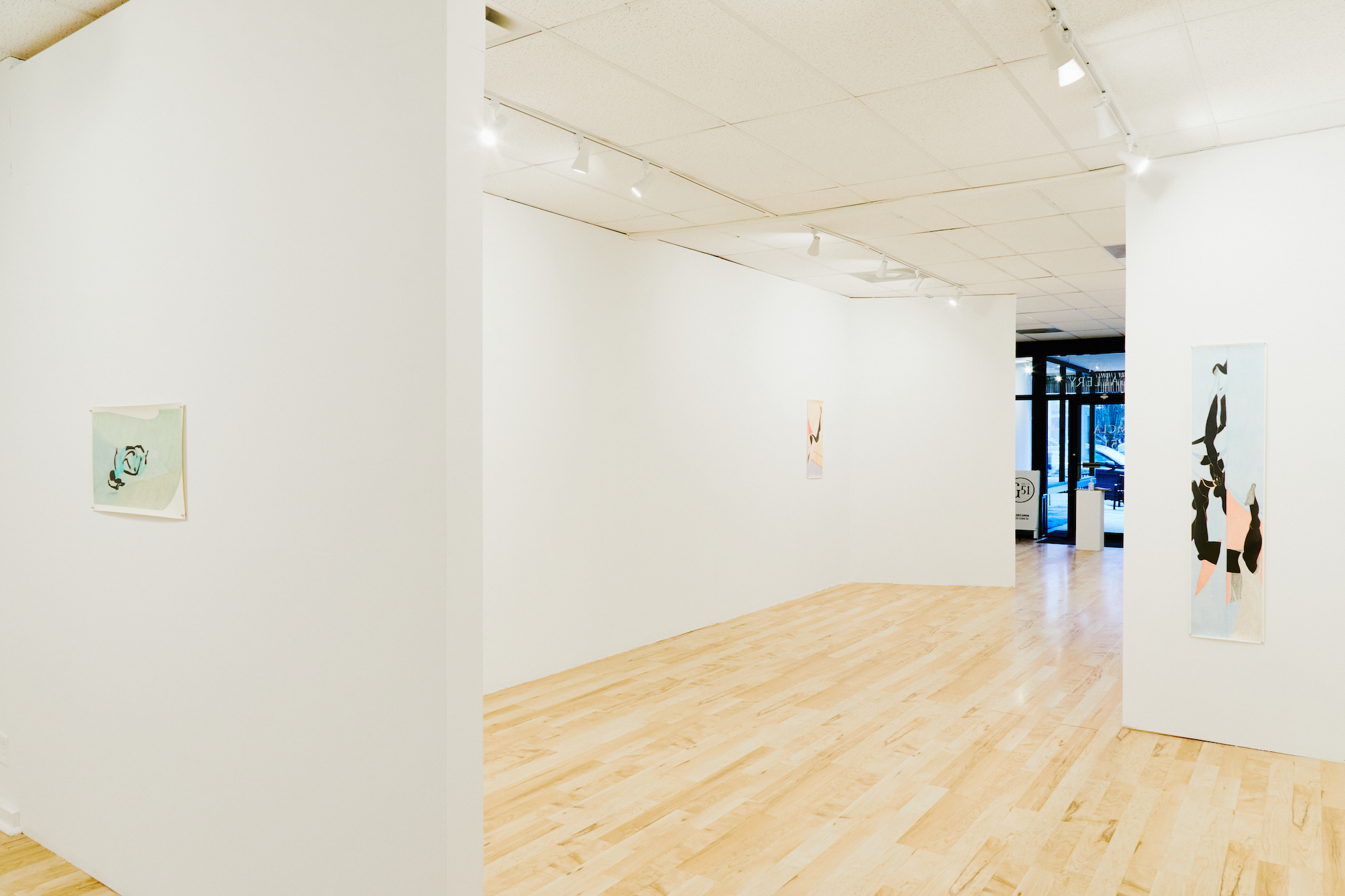
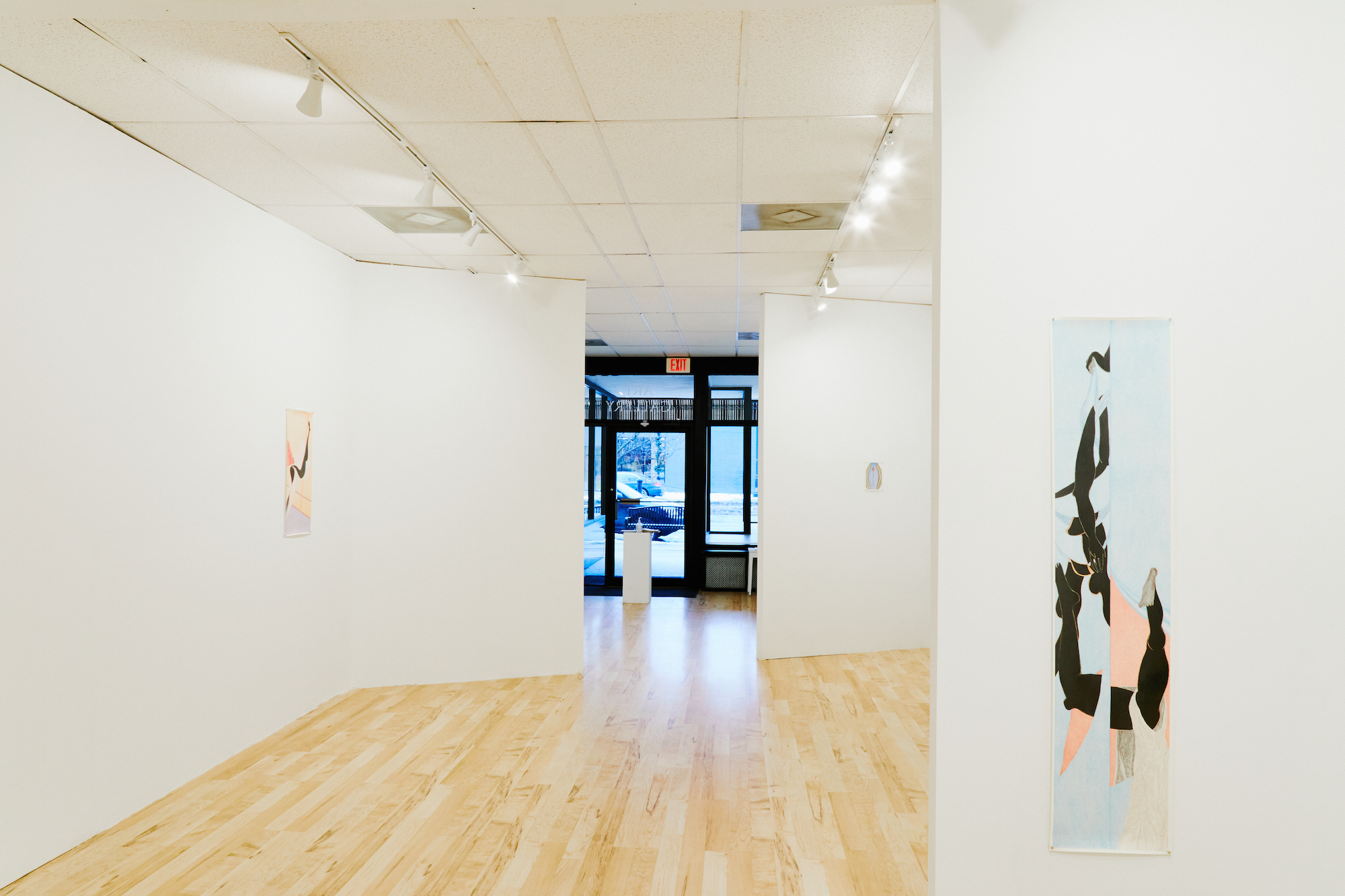
About This ExhibitThis current series of colored pencil drawings reflexively attend to the material dimension of their making to exhaust the idea of slow accumulation; a primary point of interest is the layer-by-layer composition of the image. How can a picture be sensual and draw on pleasure? What is the value of opacity? Each of these questions served to guide the process of making these drawings. Looking and being seen as points of visibility are definite modalities that inform the composition, the crops, and the angles appearing in the works, hopefully, to incite a performance and participation with the viewer. Leaning into unsteady concepts such as desire, consciousness, presence, interiority, and the ongoing shifting relationships within identity itself become the basis from which these works develop and stem. |
|
Questions to Consider1. How does this exhibit challenge your expectations of size and space? 2. What is the value of opacity and how does it change the feeling of the piece? 3. How can a picture be sensual and draw on pleasure? 4. What is Ross sharing through his art that we might not be able to see at a first glance? 5. What questions do you have about the works or the exhibit as a whole? |
|
Sketch SpaceWe invite you to sketch or draw your own ideas of this series! Post your art or your thoughts on the exhibit to Instagram and tag us at @gallery_51 |
See the whole gallery guide HERE. |